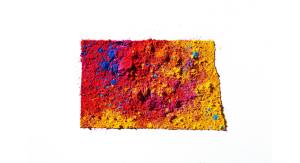States continue progress during third year of Race to the Top
States continue progress during third year of Race to the Top
Today the U.S. Department of Education released the year three Race to the Top state progress reports for the District of Columbia and the 11 states that received grants in the first two rounds of the program: Delaware, the District of Columbia, Florida, Georgia, Hawaii, Maryland, Massachusetts, New York, North Carolina, Ohio, Rhode Island and Tennessee. These reports capture the highlights and obstacles that the states saw over the course of the 2012-13 school year.
“Over the last few years, we have seen Race to the Top states build on the systems and framework that they have been developing to lay the foundation for long-term, sustainable progress,” said U.S. Secretary of Education Arne Duncan. “In the third year of the program, states were able to shift to developing more tools, resources and supports for school districts and educators to strengthen their skills and build their capacity to tackle some of the toughest work in education. We know this work isn’t easy, but what has been most encouraging is that state and district leaders have had the courage to put these plans into action, and teachers and principals have shown up day after day with the same goal that we all share: making sure every single student is prepared to be successful in college and in their careers.”
It’s important to note that the year 3 reports demonstrate a snapshot in time—the progress that states made during that year. We’ve seen a number of states take steps to address the challenges that arose in that year over the past few months. It is also key to clarify that states cannot be compared to each other with these reports. The reports mark the progress that each state has made against the plan it set forth, and states are only compared to the benchmarks they have committed to in their plans. Ultimately, in the third year, a number of Race to the Top states posted encouraging signs of progress with improved scores on national benchmarks and access to more rigorous course work and resources like AP classes.
States reached a number of benchmarks in year three, as they began to put reforms into action in classrooms. As we near the four year anniversary of Race to the Top, states are implementing their unique plans, built around four assurance areas: implementing college- and career-ready standards and assessments, building robust data systems to improve instruction, supporting great teachers and school leaders, and turning around persistently low-performing schools. Some states made strategic investments to develop tools and resources for educators, students and parents; launch state-level support networks; or develop additional science, technology, engineering and math (STEM) schools or programs. Others launched new pipelines for teachers and leaders, supported key efforts to turn around low-performing schools, or implemented teacher and principal evaluations to better support educators and inform continuous improvement.
The Department’s Implementation and Support Unit (ISU) has partnered with states to track progress and provide feedback as they implement large-scale reform. Where states encountered delays and challenges, the ISU worked with them on adjustments to help move the work forward, while holding states accountable to their commitments. ISU officials will continue to provide annual updates about states’ progress under Race to the Top.
In addition to the year two state reports, today the Department posted Annual Performance Report (APR) data from states that received Race to the Top funding in phases one, two and three. This data helped to inform the year three reports, which were also developed with information from site visits, communications with state staff, and other performance reports. The APR helps to advance the Department’s efforts to provide transparent information and allow the public to follow grantees’ progress in implementing reform plans and meeting ambitious goals for student outcomes, including performance measures, student growth and closing achievement gaps.
The Race to the Top program, which made its first awards in 2010, has provided 24 states and D.C. with about $5 billion through three phases of the flagship competition and over $1 billion to support 20 states during the three rounds of the Race to the Top-Early Learning Challenge. In 2012 the Department launched the first Race to the Top-District program, which has now funded 21 applicants—representing 80 school districts across 13 states and D.C.—with over $500 million to support locally developed plans that will prepare every student to succeed in college and their careers. The Department’s fiscal year 2015 budget request includes $300 million for a new Race to the Top Equity and Opportunity competition to create incentives and provide resources for states and school districts to address persistent opportunity and achievement gaps. RTT Opportunity builds on previous RTT competitions and reform strategies to close gaps for high-need students.
For more information about the Race to the Top program, and to review the 12 state-specific year two reports and APR data, visit: http://www2.ed.gov/programs/racetothetop/index.html.






